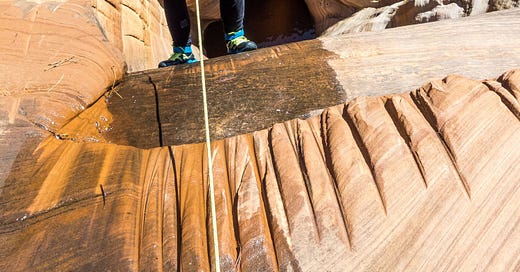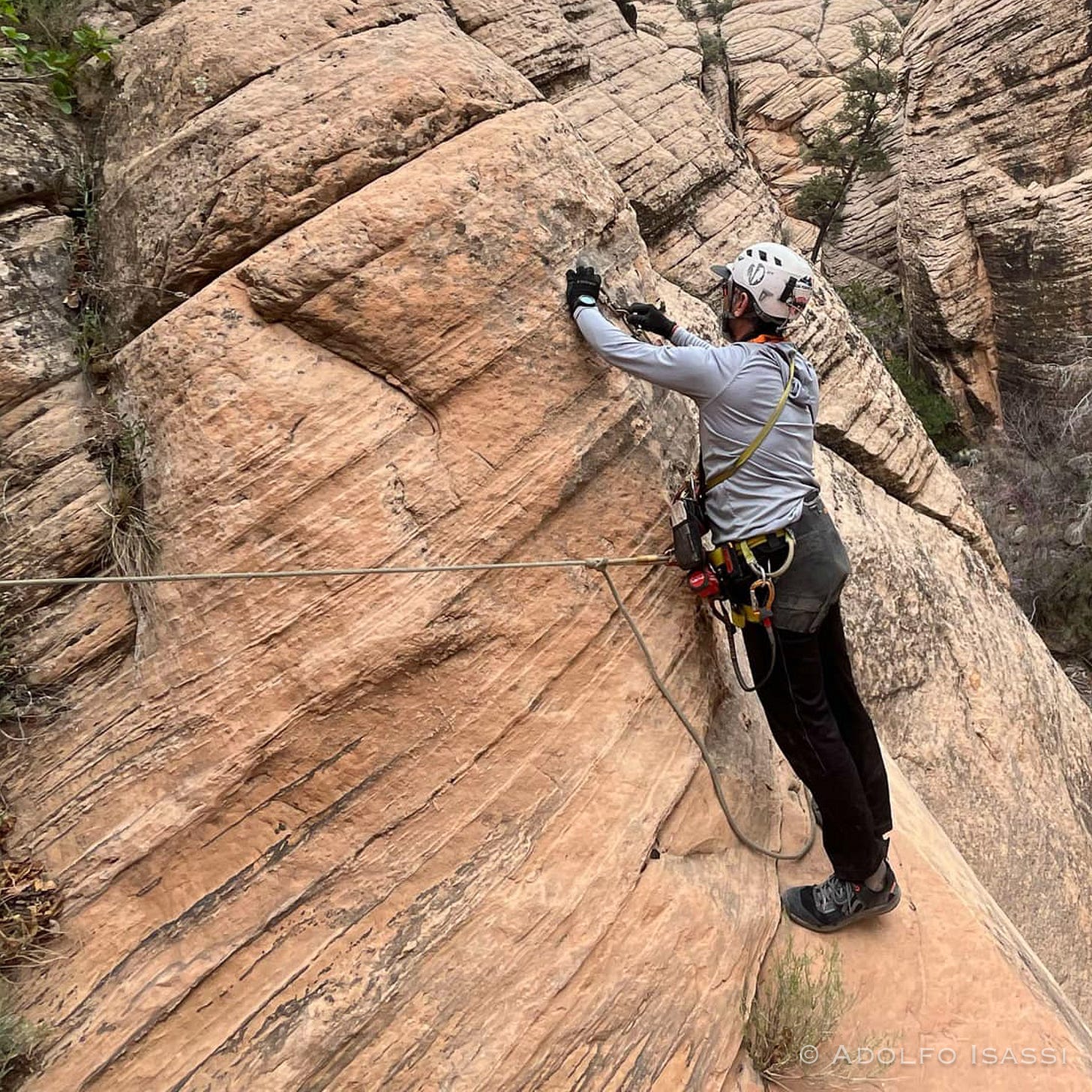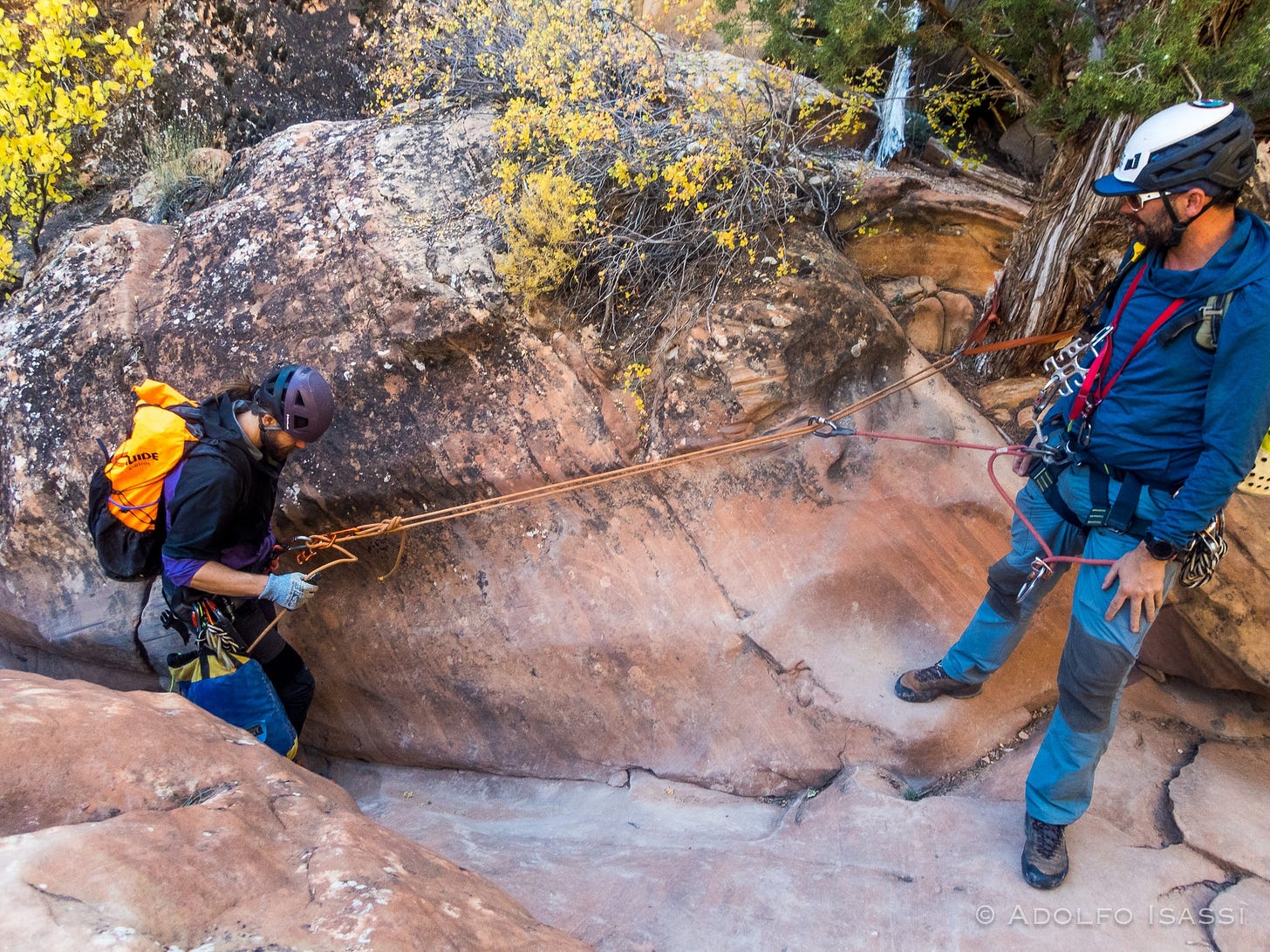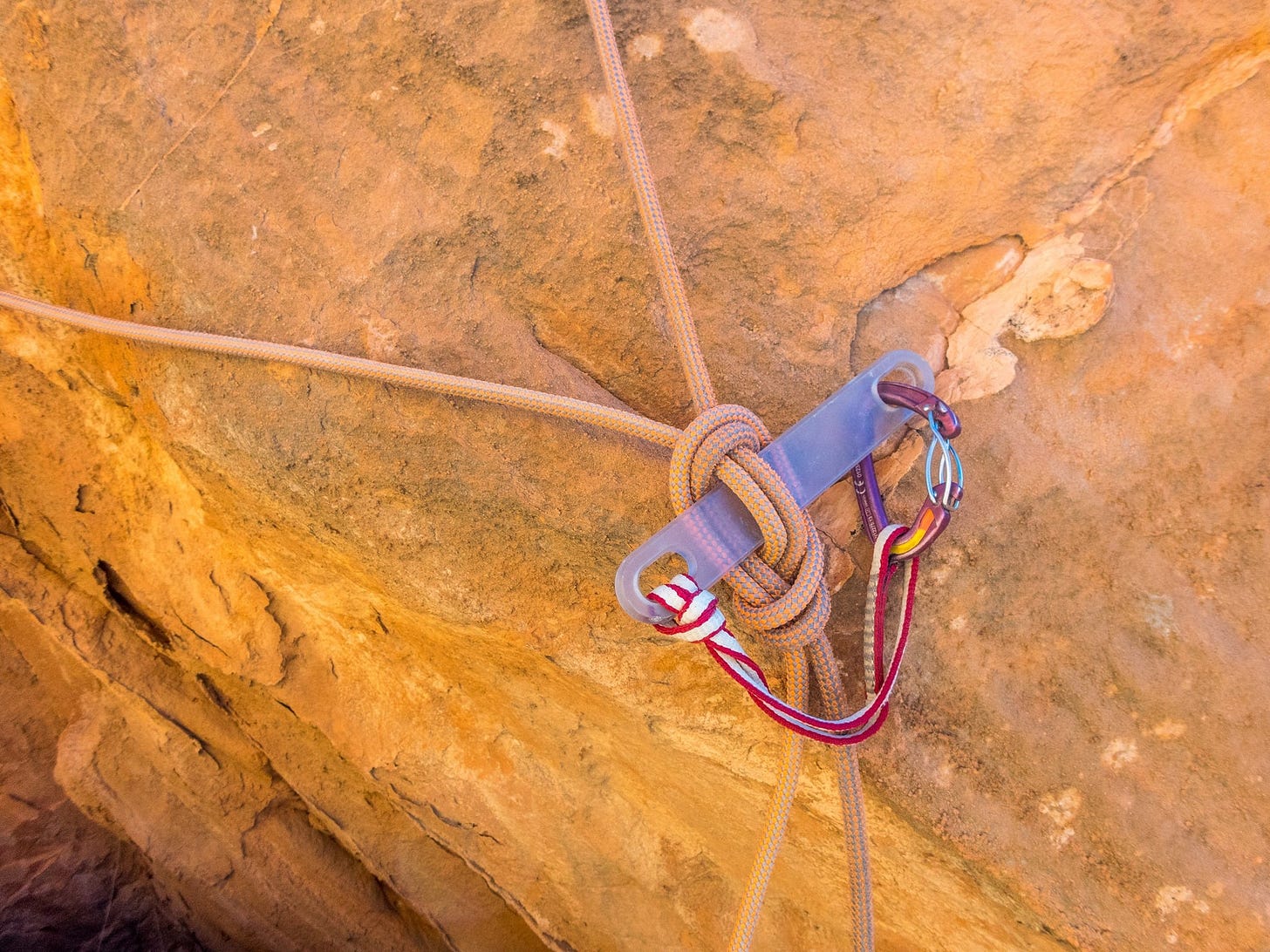Rope grooves caused by pulling down repeatedly rappel ropes over soft sandstone
Canyon Damage
In most part of the world, when canyoneering ropes make repeated contact with rock, the rope gets damaged. But in popular canyoneering areas in the American Southwest, where the canyons are made out of beautiful, but soft sandstone, when the rope makes repeated contact with the soft rock….the rock gets scared and damaged.
A deeper look at the history and cultural factors behind this widespread damage here on this previous post: How popularity, lack of training and Leave No Trace ethics damage canyons
Solutions to prevent rope on rock damage in canyons with high traffic are:
Exposed rap stations + RTLs
TRR
Courtesy rigging
Short rebelay over the edge
Pull deviations
Static TR (ghosting) rigging.
Some of these solutions solve the problem by providing a proper anchor location that results in a clean pull. While other solutions solve the problem by keeping the bad anchor location, and rigging a special system that does not require pulling the rope on the rock edge.
How solutions affect canyon ratings:
Solutions that move the anchor closer to the edge, need rope protection in the form of RTLs (traverse lines) or rebelays. Depending on the particular implementation, these solutions may move the route rating from a 3 to a 4 due to the required ropework.
Solutions that involve niche rigging solutions that are either more involved (TRR) or eliminate indirect rescue (static ghosting) may be considered "complex rope work" and bump the route from 3 to 4.
The ACA canyon rating system defines a technical 4 rating as:
Advanced-Expert Canyoneering Route may involve any combination of the following: 1) difficult and exposed free climbing and/or down-climbing, high stemming or bridging 2) climbing using direct aid, 3) multi-pitch rappels, 4) complex rope work (i.e. guided rappels, deviations, rebelays), 5) obscure or indistinct natural anchors, 6) advanced problem-solving and anchor-building skills. See route description for more information.
Solutions that may bump the canyon rating to 4:
Short rebelays over the edge
Pull deviations
Solutions that seem to have a better chance of keeping canyon ratings at 3 (for beginners) with self-learning material:
Courtesy rigging
RTLs
TRR
Static ghosting
Courtesy Rigging is an effective technique for to extend master points over short distances. Canyoneers not familiar with this technique usually cut or botch the rigging.
Exposed rappel stations need traverse rope protection
RTLs - Retrievable Traverse Lines
Currently with the increased interest in canyoning in other areas of the country like Colorado or the PNW, or international locations, it looks like more and more SW canyoneers are becoming familiar with RTLs. This seems to be the 'softest' or easiest instance of rope work from all the solutions to prevent canyon damage.
Traverse/rebelay ropework (with temporary deviation) may be considered '“advanced” ropework for some canyoneers looking for a low rating canyon.
TRR rigging systems are an efficient way to rig rig transient systems that do not need to be pulled over soft sandstone, and retain the characteristics of a releasable system ready for indirect rescue maneuvers, or set rope length. But may be considered “advanced rigging” for canyoneers looking for a low rating canyon.
Static transient rigging like toggle-sticks, CEM knots, Duffor knots, etc. have become popular in the American Southwest. Ironically, not as a way to prevent canyon damage, but as a way to curtail bolting, or giving users a sense that they are engaging in “advanced rigging” due to the risks involved with these systems. While this category of systems are useful for emergencies and explorations, they do not offer the ability to set-rope-length, or offer indirect-rescue options, making then inadequate for guiding, leading beginners.
The real solution?
What about if every canyoneer had enough training to understand basic rope work concepts. Concepts like rope abrasion, clean pulls, master point, courtesy point, static systems, releasable systems, open systems, closed systems, sequencing, etc. But alas, training has been, and still is a very low priority in communities around the SW.
The sport is still at a stage, where “a friend can teach you the ropes” while taking you into a canyon. It is a beautiful bonding experience that leaves a lasting impression, both in people and on canyons.









